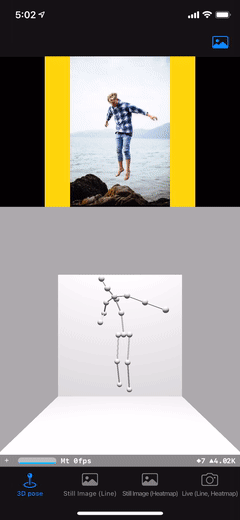Hi @tucan9389 how about using ARKit's 3D motion tracking: https://developer.apple.com/documentation/arkit/capturing_body_motion_in_3d ? Or do you think your proposed 3D pose estimation is more accurate?
Open tucan9389 opened 4 years ago
Hi @tucan9389 how about using ARKit's 3D motion tracking: https://developer.apple.com/documentation/arkit/capturing_body_motion_in_3d ? Or do you think your proposed 3D pose estimation is more accurate?
@sebo361 Thanks for your suggestion. I agree with that If the case prefers more. But I think there is some other side of benefits when using Core ML rather than AR Kit.
@tucan9389 True, these are interesting benefits to find out! However I am more interested on comparing both approaches regarding the inference speed and accuracy of 3D human pose keypoints. Now as the latest iPad Pro (and iPhone 12) have the LIDAR sensor, i expect to have more precision in 3D human motion tracking, but I am note sure if ARKit's 3D motion tracking uses LIDAR Depth API by default - do you have any insights of that?
Maybe I should setup a project to compare ARKit's 3D motion tracking with your proposed CoreML 3D pose estimation.
@sebo361
Also, Apple's 3D body tracking ARBodyTrackingConfiguration can't work simultaneously with the world tracking ARWorldTrackingConfiguration. So, unfortunately, you can't use Apple's 3D body tracking if you also need world tracking
https://github.com/tucan9389/PoseEstimation-TFLiteSwift
Here is 3D pose estimation demo by using TFLiteSwift. I implemented softargmax with pure Swift and Accelerate framework. In Numpy or Pytorch(or TF), there support dimension summation to use easily, but in swift there is no softargmax function in multi-dimension matrix(tensor). So the implementation of softargmax is a little bit hard.

lightweight-human-pose-estimation-3d-demo.pytorch
repo: https://github.com/Daniil-Osokin/lightweight-human-pose-estimation-3d-demo.pytorch
Models
Metadata
Parsing Reference